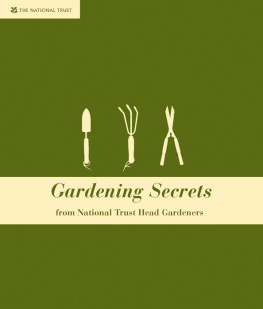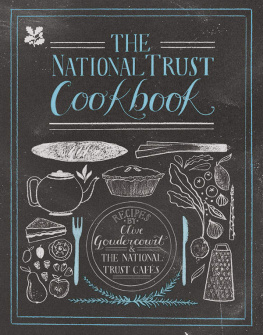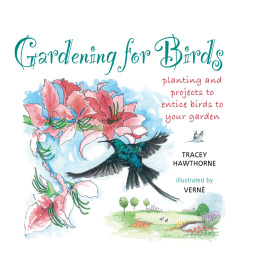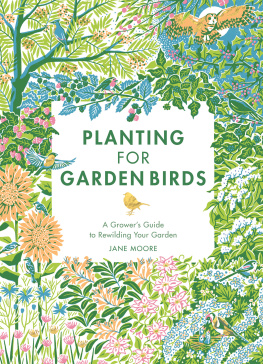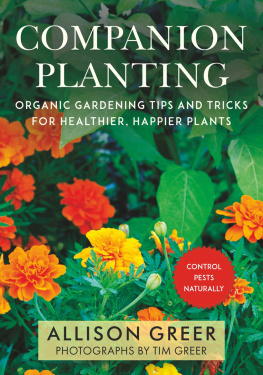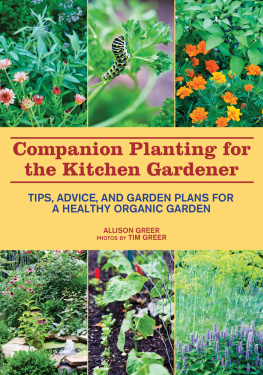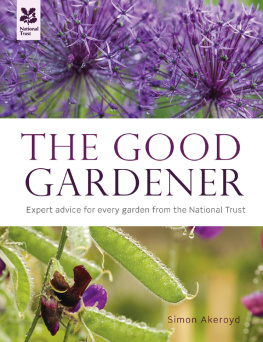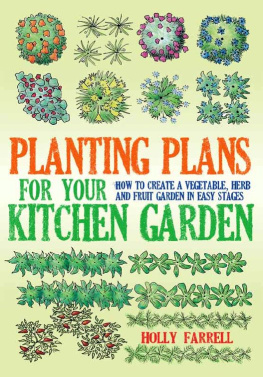MORE GREAT TITLES FROM
NATIONAL TRUST BOOKS
Tap on the titles below to read more




www.pavilionbooks.com
Gardening
Secrets
Introduction
From the 18th-century magnificence of Henry Hoars Stourhead to the 20th-century horticultural spectacle of Lawrence Johnstons Hidcote, every National Trust garden has its own special character and unique identity. Over the decades each garden has been nurtured, developed and conserved by the hands of successive owners and gardeners and today is maintained by far fewer gardeners than was the case historically. Common to every garden, though, is the high standard of upkeep associated with National Trust gardens. The question we are often asked is How is it done?
Part of the answer lies in the dedication and hard work of the National Trusts 450 gardeners and army of volunteers who together keep the Trusts 200 gardens up to standard. They may face the same problems as most gardeners, but generally on a much larger scale some gardens cover over 162 hectacres (400 acres). Maintaining the standards expected of National Trust gardens also requires a high level of skill and knowledge and this is where the Trusts gardeners excel.
Most historic gardens, though, were not originally designed to cope with large numbers of visitors during the open season grass paths are usually the first to suffer from heavy traffic in gardens designed for personal pleasure that now welcome over 100,000 visitors a year. And ever-increasing temperatures, storms, heavy rain and milder winters require an understanding of how to cope with the changing needs of plants and the increases in pests and disease that a shifting environment brings.
In the end, the quality of maintenance has an effect not only on day-to-day standards but also on the long-term conservation and development of gardens. What we do today can have a bearing on how the garden will look tomorrow and in decades to come, so developing our knowledge and applying the right approach or technical solution is critically important.
The National Trust is committed to passing on this extensive knowledge and skills base to the next generation of gardeners by investing in its three-year apprentice training scheme Careership so that standards of conservation are maintained into the future. But there are few opportunities for visitors to pick up these traditional skills, which in many cases have been handed down from gardener to gardener.
This book aims to bridge that gap, by sharing the collective wisdom of our Head Gardeners particular areas of expertise, which are often specific to the gardens they care for. Many of the techniques described in this book can be applied to small domestic gardens and, hopefully, the book will also give an insight into how each of our gardens is run and how particular features such as glass houses or kitchen gardens are maintained.
I am immensely proud of the generosity and effort that all the gardeners who work for the National Trust have put into this book. May it be a testament in years to come of their skills and deep commitment to the historic gardens in their expert care.
Mike Calnan
Head of Gardens and Parks, 2008
Planting and Maintenance
Ferns
Sam Youd, Garden Manager TATTON PARK, CHESHIRE
The 24-hectare (60-acre) garden at Tatton Park has been planted by four generations of the Egerton family from the mid 1700s. Apart from the stunning spring rhododendron display, other spectacular features include a large Fernery with a collection of tree ferns, a Japanese Garden, fully restored Kitchen Garden and Orchard, complete with Pineapple House.
Ferns are probably one of the groups of plants we take for granted in the garden or the house but can often be the ideal plant for that problem place.
Hardy ferns
Ferns can be used effectively in a group to soften planting or used singly as specimens to add a dramatic architectural dimension to parts of the garden. The other advantage of hardy ferns in the outdoors is that they will tolerate conditions that many other plants would find unacceptable, for example under trees, north-facing aspects or in wet areas of gardens.
I like to use evergreen ferns that do not die down in winter but continue to look lush even in the harshest temperatures. Plants such as the shaggy shield fern (Polystichum aculeatum), hard shield fern (Dryopteris cycadina) or holly fern (Cyrtomium falcatum Rochfordianum) look good all year round.
As far as soil conditions are concerned, it has to be said that there are fern species to suit every type of soil. There are some ferns hardy to us at Tatton Park, which despite the fact that they die down in winter are definitely worth having in a garden, especially near the pond. One of my favourites is Japanese royal fern (Osmunda regalis). This plant produces wonderful curled-up fronds in the spring, which eventually unfurl like a snake, to stunning effect. Eventually the fern can grow anything up to 2m (6ft) high and, once established, it is almost impossible to kill. As autumn approaches, the leaf colour changes to a rich golden brown, giving some great effects across the garden as it reflects the late afternoon sun.
The roots of the plants, which are very tough, were often dug up and mixed with sphagnum moss to provide compost for orchids. Propagation of Osmunda is by single division but beware, it has extremely strong roots so it is often best to chop it into two rather than struggle any other way.
Ferns inside
The Victorians were the ones who probably made the best use of ferns inside. Low light levels in houses of the era and somewhat damp conditions were ideal for certain ferns.
Maidenhair ferns (Adiantum) are a group of ferns that spring to mind for such tough conditions. Maidenhair fern (Adiantum raddianum) is the most popular species from which many amazing cultivars have been bred. They enjoy a minimum temperature of around 10C (50F) with a fairly high humidity, making them an ideal subject for bathrooms. These ferns produce really frothy foliage, which works well mixed with other pot plants.
There are other interesting ferns that will survive at cooler temperatures but are not hardy outside. Japanese carrot fern (Onychium japonicum) is so called as the fine fronds resemble carrot-like foliage. It grows to about 60cm (2ft). European chain fern (Woodwardia radicans) is another good cold-house fern, which is very dramatic. It is a big, strong growing plant with dramatic fronds up to 2m (6ft) in length. The foliage is very open but the stems gracefully arch down to the floor. In their natural habitat, the young plants that are produced on the ends of these arching fronds touch the ground, take root and start to grow.
Tree ferns
In recent years, there has been an increasing trend for growing tree ferns outside, no doubt spurred on by talk of climate change. However, tree ferns that are natives of Australia and New Zealand should be obtained from sustainable sources and need careful attention through the winter. If you are growing them in containers then they obviously can be used outside and brought in for winter, so that makes life easier.

